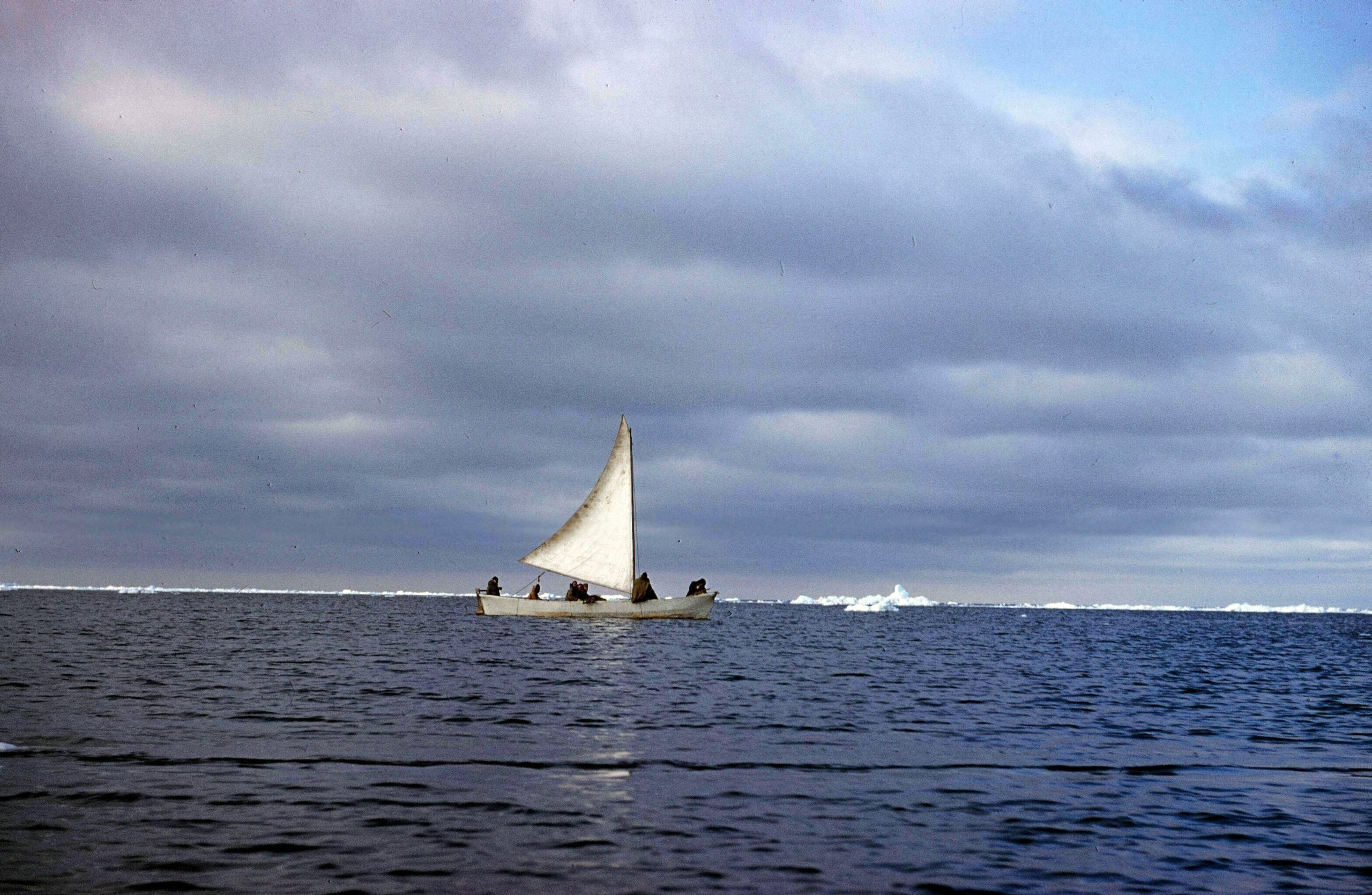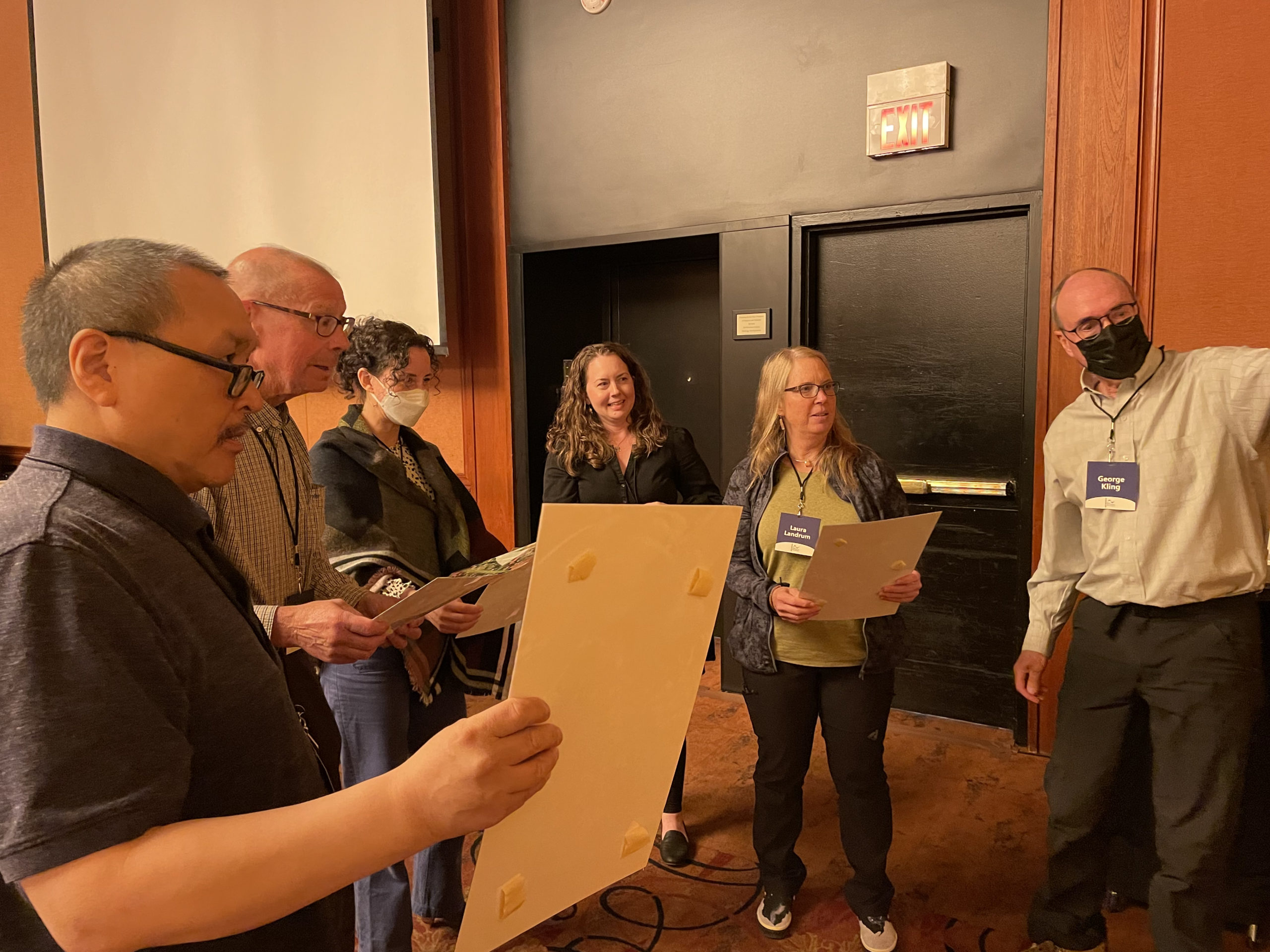Moving to the back of the boat
How a new approach to Arctic research can help us better understand and respond to environmental change.

Laboratory)
All eyes in the boat are on the sivuyagta (the St. Lawrence Island Yupik word for the striker or harpooner) as he stands in the bow closing in on a surfacing whale. Behind him are several crew handling paddles, sails, and lines, and behind the crew in the rear of the boat, the angyalek (captain) steers with the tiller. As the boat closes in on the whale, the sivuyagta signals with head movements which way the angyalek should steer. Up until those final moments, however, the captain decides everything. He decides who will be the striker and crew, whether and when to launch the boat, which whales to pursue, and when to give up the pursuit. One of us (Merle Apassingok) describes moving from the front of the boat as sivuyagta to the rear as angyalek as a profound shift in awareness and responsibility:
“Suddenly, I had to be aware of everything — the ice, the waves, the weather, the whales, and the crews’ safety. It is a tremendous amount of responsibility.”
Today, the angyaleks’ responsibilities are growing as the environment rapidly changes. The environmental awareness demanded of Apassingok and other angyaleks was learned from their elders and many hours on the water and ice. As the Arctic warms, however, new challenges are arising. Ice is diminishing, and shifting seasons require new understanding and decisions. These changes challenge the food security and cultural traditions of Indigenous people of the Arctic.
Planetary warming, the result of excess greenhouse gasses accumulating in the atmosphere, is the primary driver of changes in the Arctic environment. The mechanisms of this warming are well explained by physicists, and many – though certainly not all – of the ecosystem responses are understood by Indigenous people, scientists, and others. But, we don’t yet fully understand the consequences of these changes for humans and so far, they haven’t received enough consideration in the research that informs many decisions. The focus on impacts on people has begun to sharpen, however, as accelerating ice loss and thawing tundra amplify planetary warming contributing to illness, injury, and loss of life from extreme heat, drought, wildfires, and flooding.
We know that warming is accelerating and that timely, actionable knowledge requires an integrated understanding of the physical drivers of warming and the consequences for ecosystems (including people), human well-being, international cooperation, and economies. Such understanding can only be co-produced through syntheses of the expertise from diverse communities and disciplines.
Still, while a better integrated understanding among experts is necessary for action, that alone is not enough. The understanding must be shared effectively with decision makers at local, regional, national, and international levels. By including the those who will ultimately use the information they generate, scientific and Indigenous researchers can ensure that questions are framed and answered in ways that will be useful to each intended audience. That approach echoes a key concept popular among many Indigenous activists: “Nothing about us without us.”

Middlebury Institute of International Studies).
Recognizing the need to create and share actionable knowledge, the Study of Environmental Arctic Change (or “SEARCH”), funded by the National Science Foundation, brings together several groups — Indigenous experts from 14 communities in Alaska and Chuktoka; scientists from diverse disciplines and Arctic countries; users of expert knowledge from industry and governmental organizations and experts in communication — to co-produce and share knowledge about environmental change in the Arctic.
The study was co-designed by experts from the Alaska Native Tribal Health Consortium, Eskimo Walrus Commission, National Center for Atmospheric Research, Oregon State University, Stantec, University of Alaska Fairbanks, University of Michigan, and the Wilson Center.
At a June 2022 meeting in Anchorage, 40 Indigenous, scientific, and decision-making experts began synthesizing across disciplines and knowledge systems. Initial discussions necessarily focused on cultural as well as literal translations. For example, one of us, Vera Metcalf, shared an example that shows how synthesis is understood in her home community. She explained that elder men gather daily in the village store in Savoonga, Alaska. They discuss what happened with weather, ice, and hunting in the previous days and — based on their combined observations — consider what might come in subsequent days. Their daily discussions synthesize their individual observations into a common understanding, just as scientific syntheses combine observations from diverse disciplines into a holistic understanding.
Managing these kinds of diverse collaborations is complex and challenging, but this work is essential to better understanding the changing Arctic. The Indigenous leaders in SEARCH bring unique skills that are crucial to leading diverse participants toward a common goal. They understand and practice the art of leading from behind as when an angyalek in the back of the boat directs his crew and sivuyagta while pursuing a whale and tracking surrounding conditions. When a whale is taken, however, it takes more than an angyalek and his crew to pull from the water, then butcher, share, and store the harvest. The entire village is needed for those final steps, which includes caring for and respecting the whale.
Responding to rapid environmental change in the Arctic requires specialized knowledge and syntheses from Indigenous experts and scientists; it requires collaboration with decision makers who inform and are informed by expert knowledge; and it requires journalists and creative artists skilled in communicating knowledge. We all need to be in the boat or on the shore contributing to feeding and caring for our communities; it is, indeed, a necessary and tremendous collective responsibility.
Merle D. Apassingok of St. Lawrence Island (Sivuqaq), Alaska, was among the last whaling captains to sail for whales in a walrus skinboat.
Vera Kingeekuk Metcalf, born and raised in Savoonga (Sivungaq) on St. Lawrence Island, Alaska, has been the director of the Eskimo Walrus Commission since 2002.
Brendan P. Kelly is a professor of marine biology with the International Arctic Research Center at University of Alaska Fairbanks and the chief scientist of the Study of Environmental Arctic Change.
The views expressed here are the writer’s and are not necessarily endorsed by ArcticToday, which welcomes a broad range of viewpoints. To submit a piece for consideration, email commentary (at) arctictoday.com.